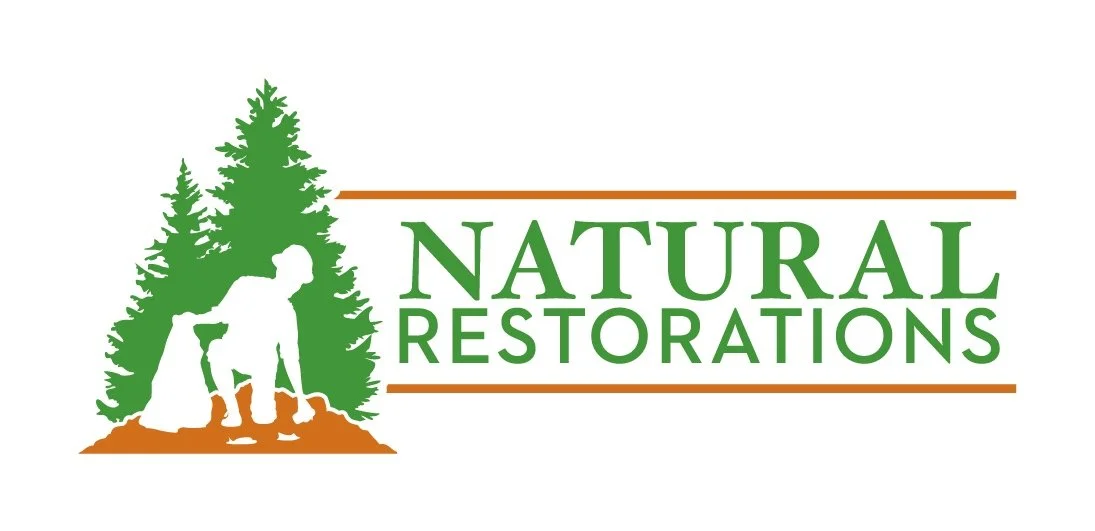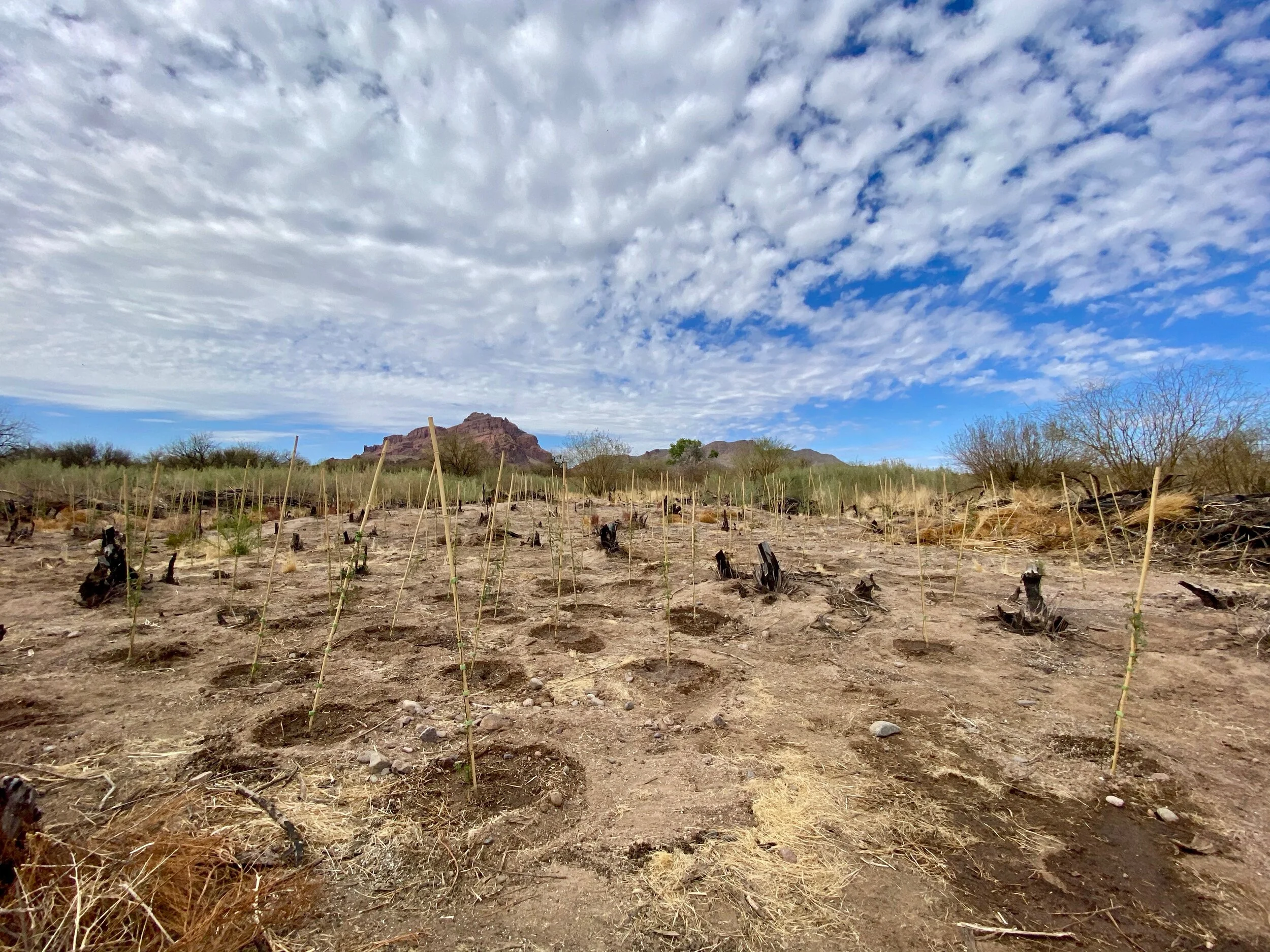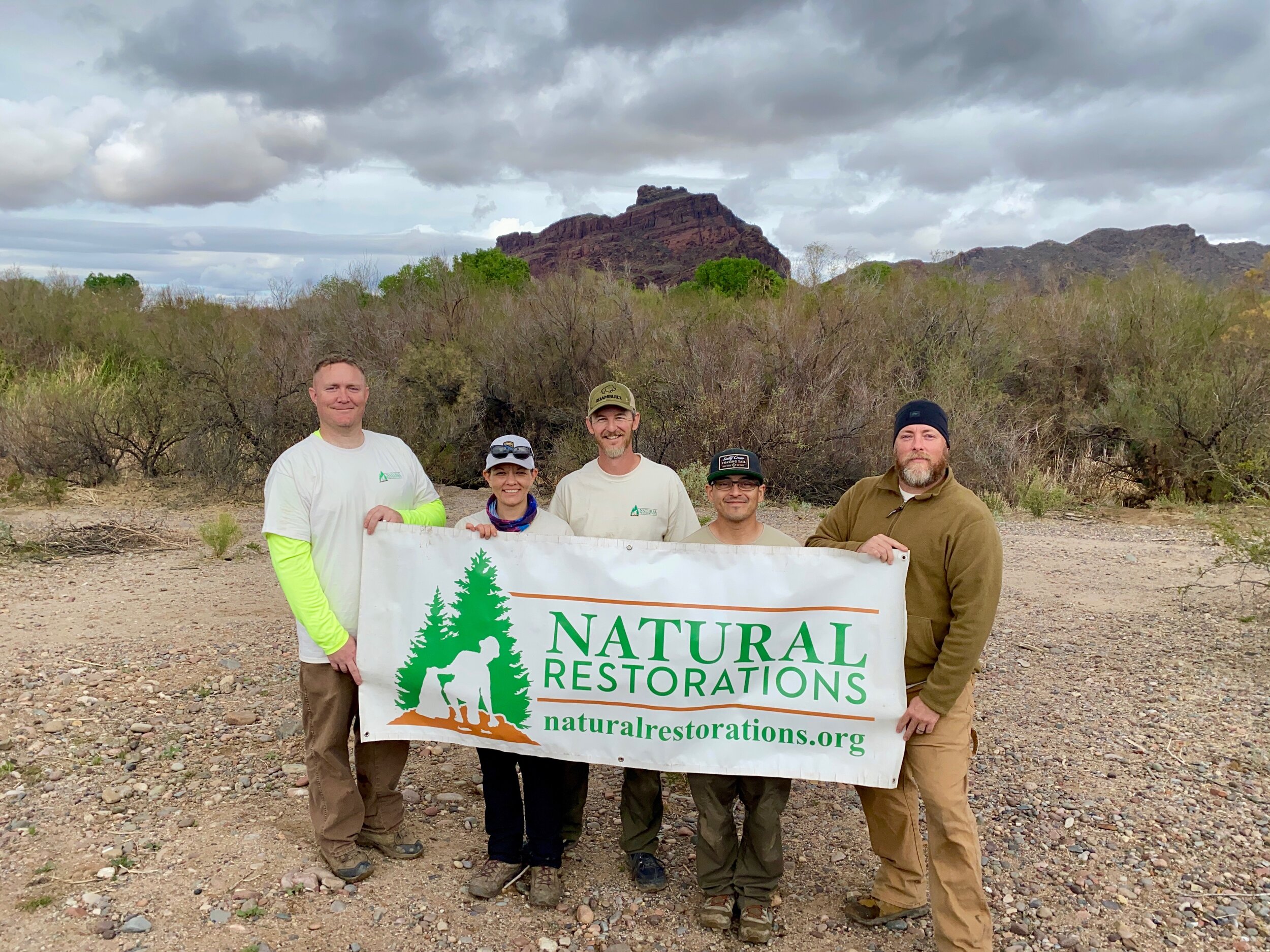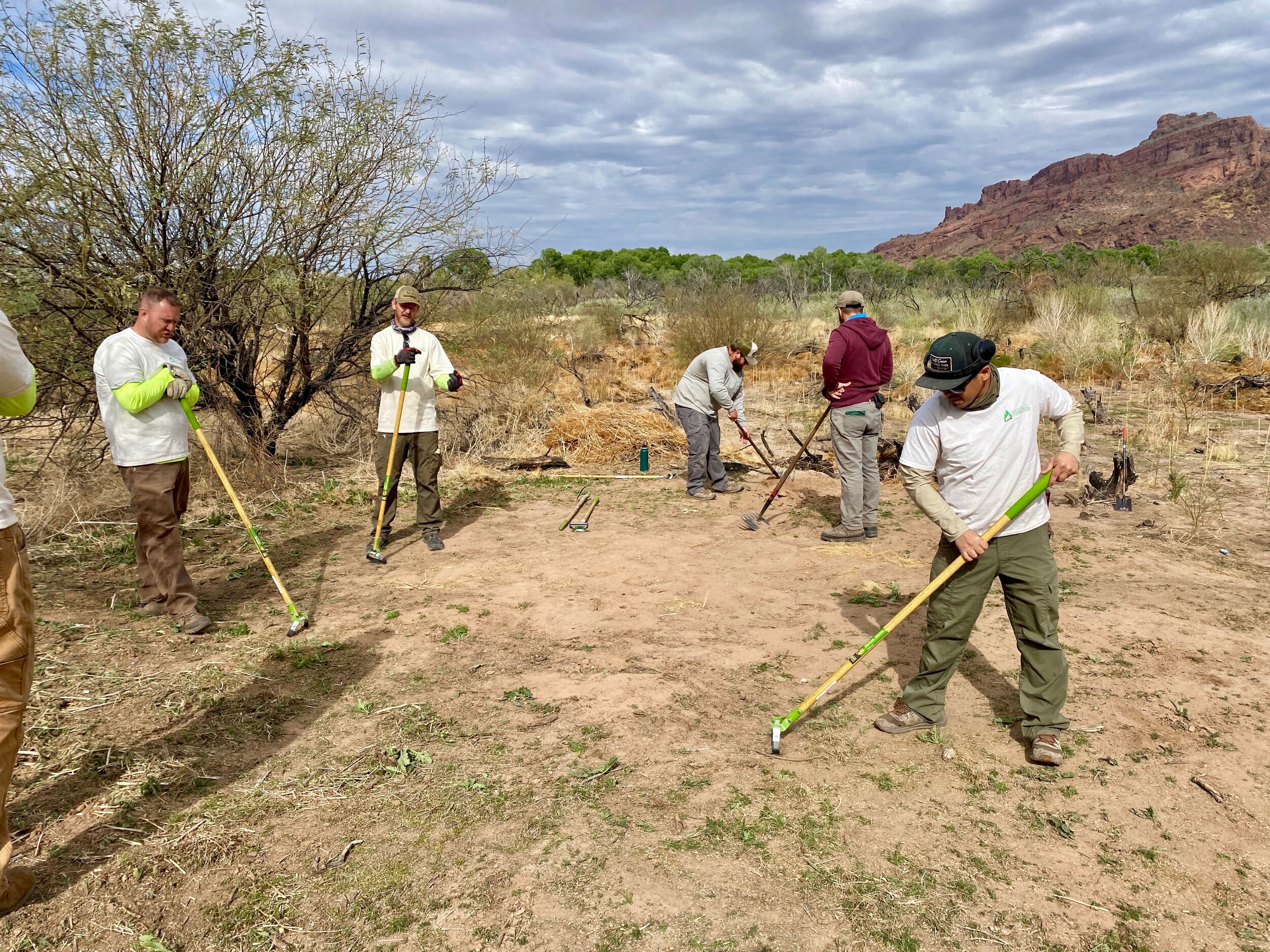Natural Restorations Dedicated Restoration Team & Project Managers from NAU’s EcoCulture Team
11,926 trees planted at the lower salt river - Tonto National Forest
We planted Coyote willow saplings, Fremont cottonwoods, & Velvet mesquites
In March 2021, our Dedicated Restoration Team resumed work on the Lower Salt River Restoration Project (LSRRP) with Program Managers from the EcoCulture team at NAU. We planted 11,926 native trees that will increase the overall abundance and diversity of native plant species within the Cactus Fire burn scar on the Lower Salt River.
The tree planting on the LSRRP revolves around a multi species approach focusing primarily on cottonwood, Goodings willow, mesquite, and coyote willow. Each of the species performs different ecological roles, providing a greater benefit to a variety of wildlife. You can check out other replanting projects on the LSRRP we have worked on with Program Managers from NAU’s EcoCulture team HERE.
Check out all of the pictures and time-lapse videos from this project below.
This project was a combined effort in partnership with grants from the Arizona Community Foundation through the Helen Dyar King Fund and the ON Semiconductor Foundation.
In late 2020, we were awarded a grant from the ON Semiconductor Foundation for a replanting project at the Lower Salt River and in early 2021, we were awarded a grant from Arizona Community Foundation to expand the project and increase the number of trees planted.
This project provided 360 hours of work to Military Veterans on our team. Veterans working with us benefited from our program not only through paid contract work but also through spending time in nature with other veterans. It is extremely rewarding to accomplish these projects, bringing life back to a fire scar area and making a lasting impact on the state.
Thank you to the Arizona Community Foundation & the Helen Dyar King Fund, and the ON Semiconductor Foundation for helping us make lasting impacts on Arizona’s natural spaces and the veterans on our team.
We would also like to thank the Program Managers from the Ecoculture team at NAU for everything they did to make this project a success. Thank you to everyone at the Tonto National Forest Service - Mesa Ranger District.
If you or your organization is interested in sponsoring our Dedicated Restoration Team and helping fund team projects, please contact us.
CLICK ON Any PICTURE FOR FULL-SIZE IMAGE GALLERY
9,800 Coyote Willow Saplings planted
Working close to the banks of the river where the water table averages 1-2 ft, we could use smaller plant material with less root development.
Coyote willow, a native riparian species that grows more like a shrub than a tree, prefer high moisture and will thrive in the wet soils close to the river.
918 Velvet Mesquite LongPots Planted
Longpot mesquites were grown in the NAU greenhouse over the span of a year. These trees require holes started by a power auger and finished with a hand auger until the proper depth (3-5 ft) to ensure the root collar of the mesquite is planted above the soil surface.
Watering trees in the desert
Watering these trees is not only valuable in providing initial water to reduce transplant shock, it also aids in compacting the soil around the freshly planted root network. This is crucial, as air pockets will result in root decay and the death of the tree. This was accomplished by providing each newly planted tree with about five gallons of water, no easy task in the middle of the desert.
Water was stored in a four-thousand-gallon water pillow placed on site. Using a generator, a series of pumps and tanks, hundreds of feet of hose and five-gallon bucks, water was distributed across the planting area. Because transportation distance is limited by length of hose and water pressure, the five-gallon buckets often required carrying an additional distance to their final destination.
48 Fremont Cottonwoods Planted
These cottonwoods were grown in the NAU green house over the span of a year. At the time of transplant they were 4-5 ft in height, including roughly two ft of roots. The trees needed their roots immediately in contact with the water table. We augured holes to the depth of the water table (4-7 ft), which means starting a hole with the power auger, which reaches 3-4 ft in depth, and then finishing the additional depth with a hand auger.
1,160 Velvet Mesquite in D60 pots Planted
D60 refers to the pot size for the trees - these mesquites are smaller than the mesquites in the longpots.
Clearing our workspace
when Prepping the site for the planting of thousands of trees, the dead & dry plant material must be removed.
Stinknet, mustard, dry grass, tumble weed, and burned wood left from the 2017 Cactus fire made the ground surface nearly inaccessible. Clearing the area provided a safe and more efficient workspace for planting trees, but also required a significant amount of work.
Removing stinknet (Globe Chamomile) from our project area
Stinknet is spreading rapidly across Arizona. It presents a different challenge when it comes to replanting because it competes with native vegetation & can quickly dominate a landscape.
Towards the end of the project, we went back to areas we planted at the beginning of the project to remove stinknet. Invasive plants generally grow and utilize resources such as sunlight, water and nutrients faster than native plants in the southwest. By removing this competition factor, native plants have a greater chance of recolonizing areas formerly overrun by invasive species.
























































































































































































